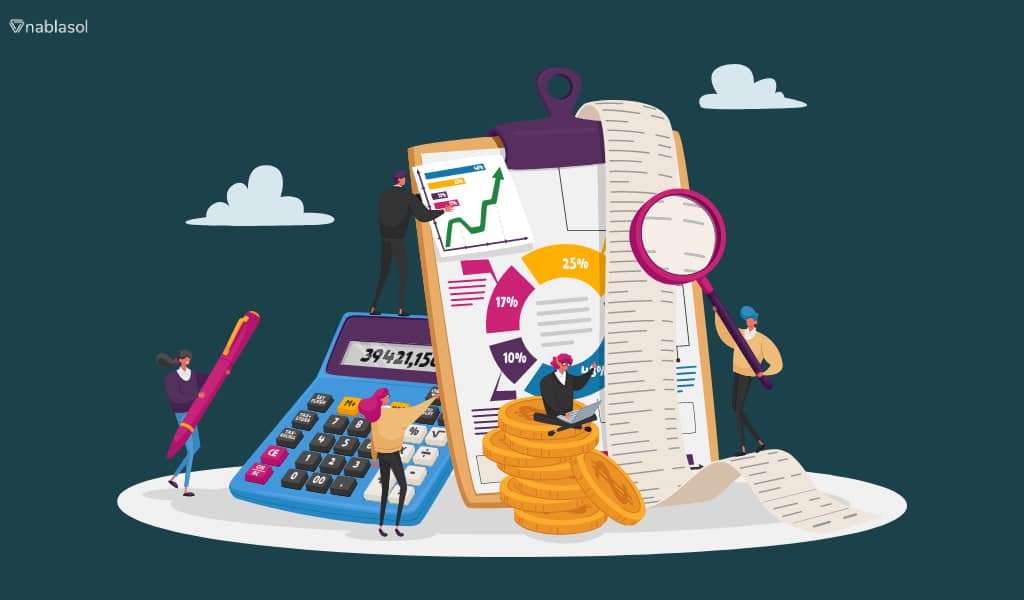Managing receivables efficiently is crucial for maintaining a healthy cash flow and ensuring the sustainability of any business. This process involves tracking and collecting payments owed by customers, which can be complex and time-consuming without proper strategies and tools. This blog will explore what accounts receivable management entails and how businesses can improve their processes to enhance efficiency and optimize cash flow.
Understanding Accounts Receivable Management
Receivables management is the practice of overseeing and managing the money owed to a business by its customers. This process includes issuing invoices, tracking outstanding payments, and ensuring that payments are collected on time. Effective management is essential for maintaining a healthy cash flow, reducing the risk of bad debts, and improving overall financial stability.
The Importance of Efficient Accounts Receivable Management
An efficient workflow can significantly impact a company’s financial health. Delays in collecting payments can lead to cash flow problems, making it difficult for a business to meet its own financial obligations. Businesses can ensure timely payments, reduce the likelihood of bad debts, and improve their financial stability by optimizing the workflow.
Key Components of Receivable Management
- Invoicing: The first step in the workflow is to issue accurate and timely invoices. Clear and detailed invoices help avoid disputes and ensure that customers understand what they owe.
- Tracking: Monitoring outstanding invoices is crucial for identifying overdue payments and taking timely action to collect them.
- Collections: Implementing effective collection strategies can help recover overdue payments without damaging customer relationships.
- Reconciliation: Regularly reconciling accounts ensures that all payments are accounted for and discrepancies are identified and resolved promptly.
Best Practices for Improving Accounts Receivables Management
Implementing best practices can help businesses streamline their processes and improve efficiency. Here are some strategies to consider:
1. Automate Your Workflow
Automation is a game-changer in receivables management. By leveraging technology, businesses can automate various tasks, such as invoicing, payment reminders, and collections. Automation reduces manual effort, minimizes errors, and speeds up the entire process. Implementing accounts receivable automation best practices can lead to significant improvements in efficiency and accuracy.
2. Optimize Your Workflow Process
An optimized workflow is essential for ensuring smooth and efficient operations. This involves analyzing and refining each process step to eliminate bottlenecks and improve overall efficiency. Implementing an optimized accounts receivable workflow process can help businesses achieve faster payment cycles and better cash flow management.
3. Embrace Digital Transformation
Digital transformation is not just a buzzword; it’s necessary in today’s fast-paced business environment. Embracing digital transformation in receivables management involves adopting digital tools and technologies to streamline and enhance the process. This can include using cloud-based accounting software, digital payment platforms, and automated reconciliation tools. A digital accounts receivable analysis can increase efficiency, accuracy, and visibility into the process.
4. Implement a Robust Integration Strategy
Integrating your receivables management system with other business systems, such as ERP and CRM, can provide a holistic view of your financial operations. Accounts receivable integration ensures that data flows seamlessly between systems, reducing manual data entry and minimizing errors. This integration can also provide valuable insights into customer payment behaviors and help businesses make informed decisions.
Steps to Transform Your Receivables Management
Transforming your receivables management process requires a strategic approach. Here are some steps to consider:
1. Assess Your Current Process
Start by assessing your current receivables management process to identify areas for improvement. This can involve analyzing key metrics, such as days sales outstanding (DSO), collection rates, and overdue invoices. Understanding the strengths and weaknesses of your current process is the first step towards transformation.
2. Define Your Goals
Clearly define your goals for transforming your accounts receivable management process. This could include reducing DSO, improving collection rates, or enhancing customer satisfaction. Having clear goals will help you measure the success of your transformation efforts.
3. Choose the Right Tools
Selecting the right tools and technologies is crucial for successful transformation. Look for solutions that offer automation, integration, and advanced analytics capabilities. These tools can help you streamline your process, improve accuracy, and gain valuable insights.
4. Train Your Team
Ensuring that your team is well-trained and equipped to use the new tools and technologies is essential for successful implementation. Provide training and support to help your team adapt to the new process and maximize its benefits.
5. Monitor and Adjust
Continuously monitor the performance of your new receivables management process and make adjustments as needed. Regularly reviewing key metrics and gathering feedback from your team can help you identify areas for further improvement and ensure that your process remains efficient and effective.
The Business Case for Automation
Building a strong business case for automation can help secure buy-in from stakeholders and justify the investment. Here are some key benefits to highlight:
1. Increased Efficiency
Automation can significantly reduce the time and effort required to manage receivables. This allows your team to focus on more strategic tasks, such as analyzing payment trends and improving customer relationships.
2. Reduced Errors
Manual processes are prone to errors, leading to delays and disputes. Automation minimizes the risk of errors, ensuring that invoices are accurate and payments are processed correctly.
3. Improved Cash Flow
By speeding up the invoicing and collection process, automation can help businesses improve their cash flow. Faster payments mean that you have more working capital available to meet your financial obligations and invest in growth opportunities.
4. Enhanced Customer Experience
Automation can also improve the customer experience by providing timely and accurate invoices, as well as convenient payment options. This can help build stronger relationships with your customers and encourage timely payments.
Conclusion
Effective accounts receivable management is essential for maintaining a healthy cash flow and ensuring the financial stability of your business. By implementing best practices, embracing digital transformation, and leveraging automation, businesses can optimize their workflow process and improve efficiency. A strategic approach to transformation, combined with the right tools and technologies, can lead to significant improvements in cash flow, reduced risk of bad debts, and enhanced customer satisfaction.
Whether you’re just starting to explore automation or looking to refine your existing process, focusing on these strategies can help you achieve a more efficient and effective receivables management process.



